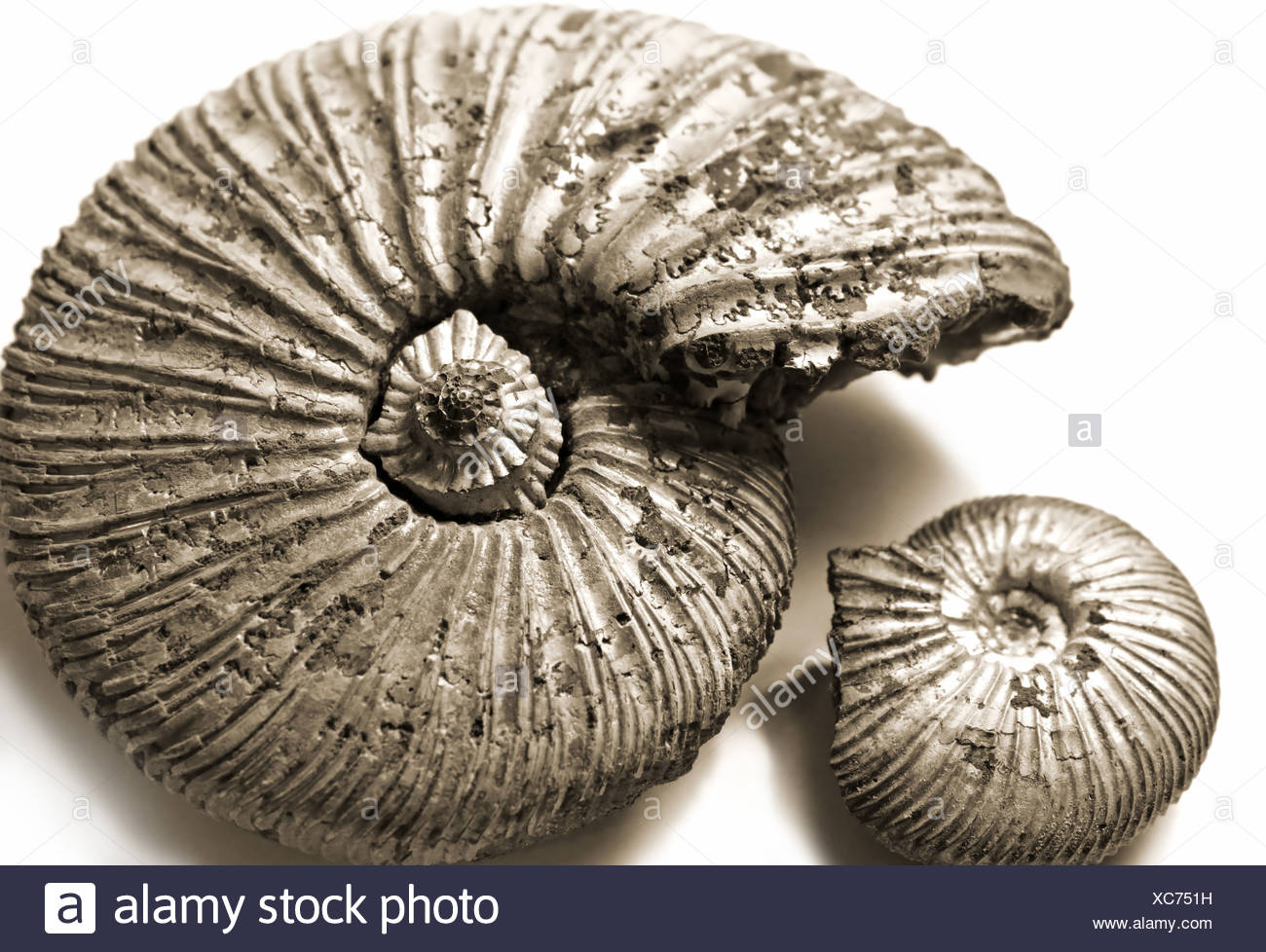

However, fossils often contain sutures, though mostly uncoloured. Gemstones with such sutures are highly valued and prized. Suture patterns are not common in jewellery, as they are rarely coloured. If an ammonite is found, the soil can be dated since the sutures of a 100-million-year-old ammonite fossil will differ from a 65-million-year-old shell. Oil companies have been known to make use of this factor when core sampling. Sutures are very distinctive and are an important aid in the classification of ammonites. The contact of these septa with the external shell is called a suture. Unlike nautiloids which have "straight" and simple septa, the septa of ammonites evolved very complex undulations which gave greater strength to a thin shell. There are nautiloid, goniatitic, ceratic and ammonitic suture patterns that slightly differ in appearance. Over millions of years, the suture patterns of the ammonites moved towards a greater complexity. Suture patterns have varied forms depending on the subclass of Cephalopods. The shell of the ammonite consists of chambers joined together by sutures. However, this phenomenon happens very rarely and the pieces that contain these protrusions are highly valued. In certain pieces of jewellery, these horns will appear in the ammolite. It is believed that males had this structure for ornamental and defensive purposes since ammonites were prey to one of the biggest-brained predators of its time, the mosasaurus. The horns on Placenticeras intercalare are usually evenly spaced in two concentric rings along the spiral from the protoconch out to the edge of the living chamber. Since there were many more females than males in the ammonite world,and about 1:4 horned fossils, some believe that the fossils with these protrusions are in fact males. Sexual dimorphism has been used to explain horned fossils. Therefore, in some cases, there will be more than one theory to explain irregularities. Since extensive research about ammonites and ammolite is not conducted very often, our knowledge is limited. For example, the rarer Placenticeras intercalare possesses horns which are protrusions that follow the inner spiral of the sea creature, whereas Placenticeras meeki has a smooth and flat surface. These variations of ammonite simply vary in anatomical appearances. In Alberta, there are 3 different species of ammonites found: Placenticeras costatum, Placenticeras intercalare and Placenticeras meeki. Below we will discuss a few important and distinctive anatomical features of these amazing cephalopods. They flourished during the Devonian period and along with the dinosaurs, disappearred during the Cretaceous-Paleogene extinction event.Īmmonites were once found all across the world and consequently had many diverse and unique features. Despite the modern Chambered Nautilus species looking very similar to an ammonite, the most closely related creatures to ammonites today are octopuses, squids and cuttlefish.

Ammonites, the common name for ammonoids, are an extinct marine mollusk.


 0 kommentar(er)
0 kommentar(er)
